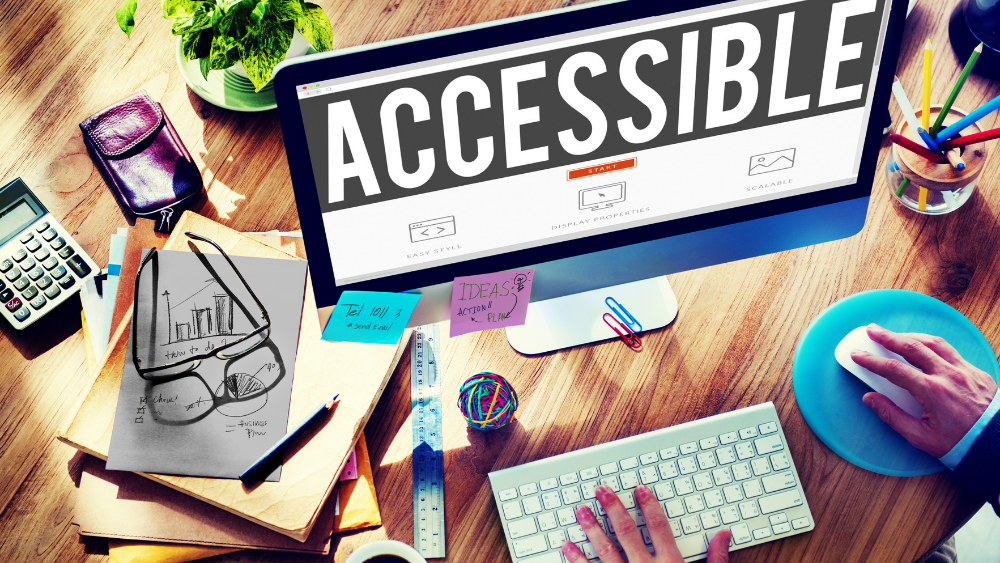Insights
INSIGHTS
All Topics
5 best practice tips to make your charity social media posts more accessible
03 Sep 2020by Chloe Green
Charity social media is about bringing people together. But you can’t do that if you’re unintentionally excluding some of your audience
Over the past few years, charities have put significant focus on inclusive website design that accounts for a wide range of diversity among users and the barriers they might face when interacting with digital content.
These limitations fall broadly into three categories – permanent (like when someone has a disability, visual or cognitive impairment), temporary (such as when someone is recovering from a stroke or has an ear infection) and situational (for instance, someone interacting with content whilst holding a baby, in a very loud place or somewhere where they aren’t safe to play content out loud).
Accessibility encompasses a wide range of different audience challenges. And for many organisations, ensuring that everyone has equal access to their information and content is a vital part of their mission.
But accessibility goes far beyond just your website. It is also crucial to reaching new audiences and building relationships with diverse groups of supporters and advocates. Has your charity thought about the content you’re putting out on social media platforms?
Here are some quick social media best practice tips and accessibility features to get you started.
Make sure your built-in accessibility features are enabled
This is probably the first you should do to make your social content more accessible. Explore the settings of the platforms you’re on and enable any accessibility features, as some may not be turned on by default. In Twitter, for example, you have to dig for it in ’Settings and Privacy’ > ’Accessibility’. Take the time to familiarise yourself with them, and with the latest accessibility updates from the platforms you use.
Write your text for screen readers
Screen reading software is commonly used by visually impaired and blind people to speak aloud text. There are a few tweaks for making social media text a lot more legible screen readers that you should know:
- Avoid caps lock and over-using all-caps (NOBODY LIKES TO BE SHOUTED AT!!!)
- Similarly, limit using multiple emojis as the descriptions of these get read aloud and keep them to the end of a post
- Use camel case for hashtags with multiple words (#HashtagsLikeThis as opposed to #Hashtagslikethis). This is also a god tip for general legibility
- Put hashtags and mentions at the end of tweets, instead of jumbled in the middle or at the beginning, as they can disrupt the flow of copy being read aloud
Aim for readability
Keeping text clear and simple not only assists screen readers but it also greatly helps users like new language learners and those with a cognitive impairment such as dyslexia.
- Just like on your website, make sure text on your social media gifs, images and videos is big enough, is clear enough to read and has adequate contrast with the background
- Eliminate jargon and write in short, concise sentences. If you’d like to get a quick gauge of how readable your text is, try inputting it into the free Hemingway app
- Read up on more readability principles and practical tips in our article ’How improving readability can step up your charity’s content marketing’
Make images easier to understand
Consider people with visual and cognitive impairments when creating images for your social media content. Again, this is also hugely important for screen-reading technology, but it can be equally as helpful to people who have trouble processing image content.
Social media platforms including Twitter and Facebook, and now finally Instagram, let you add ’alt text’ to images. This is a description of the image that comes up when a user hovers their mouse over it, or a screen reader picks it up. Make sure you’ve included alt text and that it conveys the needed information in your images.
When conveying information in a chart, graph or diagram, be aware of your use of colour. Don’t rely on colours for meaning, but instead use other clues like text labels. There are estimated to be about 300 million people in the world with some form of colour blindness!
Put captions and descriptions on video
For users with hearing impairments (about 1 in 6 people in the UK), this is absolutely crucial, but it can also enhance the experience for other viewers and make content easier to digest in all situations.
- Make sure you have auto-captioning turned on with Facebook and YouTube
- With Instagram, LinkedIn, Twitter, Pinterest, Snapchat and TikTok, you need to include your own captions and descriptions as part of the videos you create
- Descriptive audio transcripts are also an important way of conveying information to users with visual impairments, filling the gaps where action isn’t described by narration and might be confusing to someone unable to see
- When carrying out a live video stream (such as on Facebook Live) make sure to narrate what’s happening for visually impaired users
Chloe Green
More on this topic
Recommended Products
Our Events
Charity Digital Academy
Our courses aim, in just three hours, to enhance soft skills and hard skills, boost your knowledge of finance and artificial intelligence, and supercharge your digital capabilities. Check out some of the incredible options by clicking here.



















